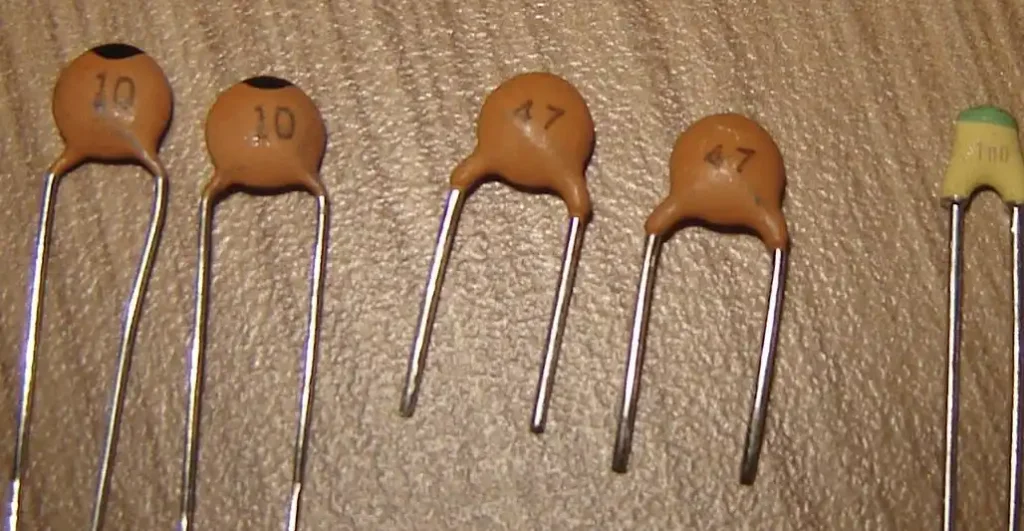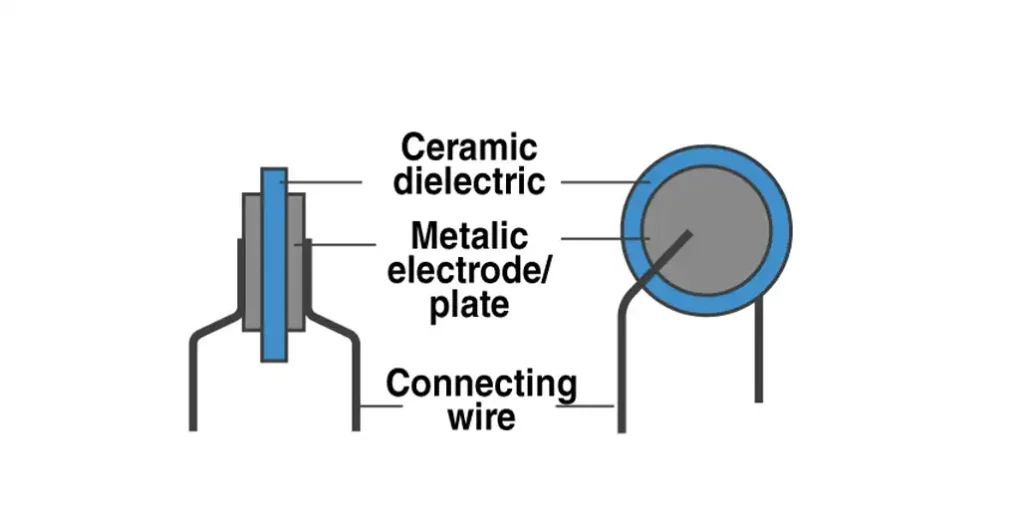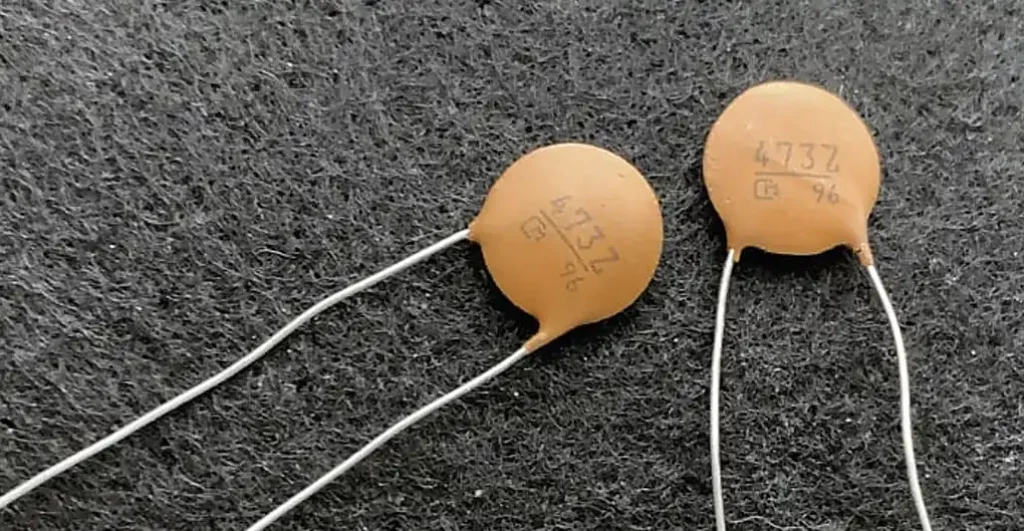In the intricate world of electronic components, ceramic capacitors stand out as ubiquitous yet often misunderstood marvels. Their compact size belies their importance in countless electronic devices, serving as fundamental building blocks in circuitry across industries. But what exactly is a ceramic capacitor, and why does it hold such a crucial role in modern electronics?
In this comprehensive guide, we embark on a journey to unravel the mysteries surrounding ceramic capacitors. From their basic construction to their wide-ranging applications, we’ll delve deep into their inner workings, exploring the science behind their functionality and the practicalities of their implementation. Whether you’re an electronics enthusiast, a seasoned engineer, or simply curious about the technology shaping our digital landscape, this exploration aims to demystify ceramic capacitors and shed light on their significance in today’s technological ecosystem.
What is Ceramic Capacitor

A ceramic capacitor is a type of electronic component used in circuits to store and release electrical energy.
It consists of two or more ceramic layers separated by a thin layer of insulating material. The ceramic material acts as the dielectric, which determines the capacitance value of the capacitor.
Ceramic capacitors are popular due to their small size, low cost, and stable performance over a wide range of temperatures and frequencies. They come in various shapes and sizes, including disc, chip, and multilayer ceramic capacitors (MLCCs). They are commonly used in electronic devices such as computers, smartphones, and power supplies, for applications like filtering, decoupling, and timing circuits.
What Are Ceramic Capacitors Made Of

Ceramic capacitors are composed of two main components: the ceramic dielectric material and the electrodes.
Ceramic Dielectric Material:
- The dielectric material is the heart of a ceramic capacitor, providing the insulation between the electrodes and determining the capacitor’s electrical properties.
- Ceramics commonly used as dielectrics include materials like barium titanate, titanium dioxide, and other metal oxides.
- These ceramic materials offer high dielectric constants, meaning they can store a significant amount of electrical energy in a small volume.
- The choice of ceramic material affects the capacitor’s capacitance value, temperature stability, and frequency response.
Electrodes:
- Electrodes are metallic layers applied to the surfaces of the ceramic dielectric material.
- These electrodes serve as the connection points for electrical current flow into and out of the capacitor.
- The most common electrode materials are precious metals like silver, palladium, or silver-palladium alloys.
- Electrodes can be applied in various configurations, such as plated on one or both sides of the ceramic layers, or as inner layers in multilayer ceramic capacitors (MLCCs).
The manufacturing process for ceramic capacitors involves forming layers of ceramic material with interleaved electrodes, followed by sintering to fuse the layers together. After sintering, the capacitor is often coated with a protective layer and then encapsulated to protect it from environmental factors like moisture and mechanical stress.
What Are Ceramic Capacitors Used For

Ceramic capacitors find widespread use across various industries and applications due to their versatility, reliability, and performance characteristics. Here are some common uses:
Decoupling and Filtering:
Ceramic capacitors are extensively used for decoupling and filtering in electronic circuits.
They help to stabilize voltage levels by providing a low-impedance path for high-frequency noise and ripple currents to ground.
These capacitors are often placed near integrated circuits (ICs), microcontrollers, and other sensitive components to reduce electromagnetic interference (EMI) and maintain signal integrity.
Timing and Oscillation:
Ceramic capacitors play a crucial role in timing circuits and oscillators.
They are used in conjunction with resistors to create RC (resistor-capacitor) circuits that determine the frequency of oscillation in applications like clock generators, timers, and pulse-width modulation (PWM) circuits.
Coupling and Bypassing:
Ceramic capacitors are employed for coupling and bypassing signals in audio amplifiers, radio-frequency (RF) circuits, and high-speed digital communication systems.
They allow AC signals to pass while blocking DC bias, enabling efficient signal transmission and amplification.
Power Supply Decoupling:
Ceramic capacitors are essential for power supply decoupling, where they serve to stabilize voltage rails and suppress transient voltage spikes.
They are commonly used in voltage regulator circuits, switching power supplies, and battery-powered devices to ensure smooth and stable power delivery.
Voltage Regulation:
Ceramic capacitors are utilized in voltage regulator modules (VRMs) and voltage reference circuits to improve regulation and transient response.
They help to minimize voltage fluctuations and ensure a steady supply of power to sensitive electronic components.
RF and Microwave Applications:
Ceramic capacitors are well-suited for RF and microwave applications due to their high-frequency performance and low parasitic effects.
They are used in RF filters, impedance matching networks, and RF amplifiers in wireless communication systems, radar systems, and satellite communication equipment.
Ceramic capacitors are integral components in virtually all electronic devices, ranging from consumer electronics like smartphones and computers to industrial equipment, automotive systems, and aerospace technology. Their compact size, high reliability, and excellent electrical properties make them indispensable for modern electronic design.
What Does a Ceramic Disc Capacitor Do
A ceramic disc capacitor serves the same fundamental purpose as any other capacitor: it stores and releases electrical energy. However, its specific design and construction make it suitable for certain applications where its characteristics are advantageous.
Here’s what a ceramic disc capacitor does:
- Capacitance: Like all capacitors, a ceramic disc capacitor has a capacitance value, which determines its ability to store charge. This capacitance can range from picofarads (pF) to microfarads (µF), depending on the specific requirements of the circuit.
- Blocking DC and Passing AC Signals: Ceramic disc capacitors can block direct current (DC) while allowing alternating current (AC) to pass through. This property makes them useful for coupling or decoupling AC signals in circuits while preventing the flow of unwanted DC bias.
- Filtering: Ceramic disc capacitors are often used for filtering applications, where they help to remove unwanted noise or ripple from power supplies or signal lines. They can effectively shunt high-frequency noise to ground, improving the overall signal quality.
- Timing: In conjunction with resistors, ceramic disc capacitors can be used to create timing circuits. The combination of resistance and capacitance in an RC circuit determines the timing characteristics, useful in applications such as timers, oscillators, and pulse generation.
- Bypassing: Ceramic disc capacitors are also used for bypassing purposes, where they provide a low-impedance path to ground for high-frequency noise and transient currents. This helps to maintain stable voltage levels and reduce interference in sensitive electronic circuits.
- Voltage Regulation: In voltage regulation circuits, ceramic disc capacitors can assist in stabilizing voltage levels and improving transient response, particularly in low-voltage applications where their compact size and high reliability are advantageous.
Ceramic disc capacitors are versatile components commonly used in various electronic circuits for tasks such as signal conditioning, noise filtering, timing, and voltage regulation. Their simple design, wide range of capacitance values, and suitability for high-frequency applications make them valuable additions to many electronic designs.
Conclusion
Ceramic capacitors are indispensable components in modern electronics, serving a multitude of critical functions across a diverse range of applications. With their compact size, high reliability, and excellent electrical properties, ceramic capacitors provide essential support for stable voltage regulation, efficient signal transmission, noise filtering, timing control, and more.
From consumer electronics to industrial machinery, aerospace technology to automotive systems, ceramic capacitors play a vital role in ensuring the smooth operation and performance of electronic devices and circuits.
As technology continues to advance, the importance of ceramic capacitors in shaping the future of electronic innovation remains undeniable. Their versatility and reliability make them enduring staples in the toolkit of engineers and designers, driving progress and powering the devices that define our interconnected world.




















